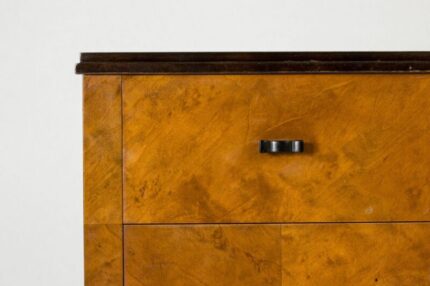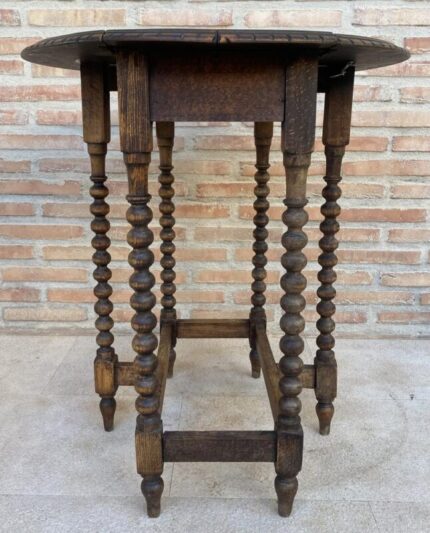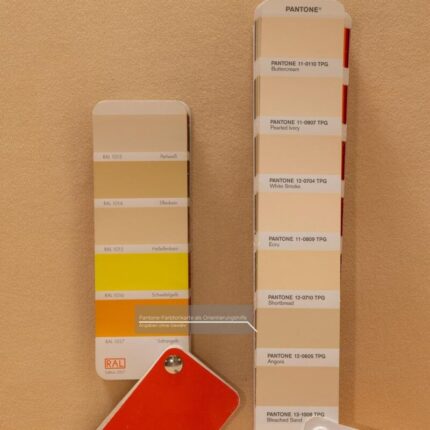Engraved by Charles Knight (1743-1826) after Henry William Bunbury (1750-1811)
Published London 1787
A pair of oval shaped, stipple engravings printed in sepia ink, engraved by Charles Knight after drawings by Henry William Bunbury, published in London by W. Dickinson 1787.
In one plate a young women carries a bundle on her head, another with a wheat sheaf under one arm gestures towards where they are to walk. A young girl carrying a bundle beside them looks tired and frustrated and an older women in the background gathers together another bundle of corn. In the second plate three young women also gather corn into bundles whilst, nearby, a shepherd boy in a hat plays a ‘shawm’ with a dog sitting beside him, a church can be seen in the distance.
A pair of prints on the subject of “Gleaners” (rustic folk, gathering up leftover corn following the harvest). In England, up until the late 18th century, ‘gleaning’ was seen as an inherent right for landless tenants and poor “cottagers”. The practice, customarily undertaken by women, had carried on for centuries, based on the Biblical precedent of Leviticus 19:9-10 which proposed the idea that landowners had an obligation to provide for the poor and marginalized by leaving field edges and gleanings “for the poor and the foreigner” (King James Version). In some parishes the church bell was rung (possibly signified here by the church tower in the print) to signal the times during which gleaners could operate.
Interestingly, at the exact time that these prints were published, during the era of ‘Enclosure’ (following the passing of the Enclosure Act of 1773) the rights of gleaners was being questioned and challenged in the courts for the first time. Over the harvests of 1785–1787 disputes had arisen between land owners and gleaners in the village of Timworth in Suffolk leading to prosecutions. In the case of Worlledge v Manning (1786), heard in the Court of Common Pleas, it was decided that a stranger from outside a Parish had no right to glean. This ruling was a catalyst for other cases to be brought and in 1788 (the year after these prints were published) a ruling in the case of Steel v Houghton et Uxor effectively extinguished the rights of anyone to glean harvest from a private field. This has been referred to by a number of authorities as “The Great Gleaning Case”. The verdict stated gleaning was not a right but a privilege and so to glean was to trespass on another’s land.
Therefore, although lost on a modern audience, Bunbury’s images of “Gleaners” were extremely topical at the time of publication. Legal cases had stimulated a widespread public debate over gleaners’ rights so it can be seen that the subject matter was highly charged. Bunbury was born in Suffolk and came from a family of wealthy landed gentry; his childhood home at the Manor House, Mildenhall and its substantial estates were only 10 miles from Timworth where the events surrounding the cases of Worlledge v Manning and Steel v Houghton took place. The wholesome and innocent depiction of rural life here, suggests that Bunbury, the son of a Anglican clergyman baronet (who was Vicar of Mildenhall), may have had sympathic leanings towards “The Gleaners” and the images are much more political than they might first appear.
“Henry William Bunbury (1750-1811) was born at the Manor House, Mildenhall, Suffolk on 1 July 1750, second son of the Revd Sir William Bunbury, fifth baronet (c.1710-1764) and vicar of Mildenhall, and his wife, Eleanor (d. 1762), daughter of Colonel Vere Graham, of Wix Abbey, Essex. Educated at Westminster School, London, where he began producing his characteristically humorous drawings, including The Judgment of Paris, this and his other early compositions were etched by the artist, but after c.1771 all his published drawings were etched by professional engravers. On 30 January 1768 he entered St Catharine’s College, Cambridge and university life inspired works such as The Hopes of the Family and Pot Fair, Cambridge, exhibited at the Royal Academy in 1776.
A tour of France in 1767 whetted his appetite for foreign travel, and in 1769 he abandoned his university studies to take the grand tour, traveling from Paris to Naples. The tour resulted in a flood of works poking fun at foreigners, and particularly at the French; La Cuisine de la Poste was shown at the Royal Academy in 1770 and won acclaim, notably from the connoisseur and collector Horace Walpole, who subsequently heralded Bunbury as ‘the second Hogarth’. Although readmitted to Cambridge in February 1771, Bunbury seems never to have taken a degree and in August of that year he married Catherine Horneck (1754-1799), and settled in a house on his brother’s estate at Great Barton, Suffolk. They had two sons Charles John (1772-1798) and Henry Edward (1778-1860), later to succeed to his uncle’s title as seventh baronet.
Bunbury spent much of his time in London, where he and his wife enjoyed a social life with friends drawn from the aristocracy and artistic and literary circles, including Garrick, Dr Johnson, and Sir Joshua Reynolds, who was godfather to his second son, and as a result was often in financial difficulties. To augment his income he took the post of comptroller of army accounts, c.1775-1784, with an income of £750 per annum; he also served in the West Suffolk militia, rising to the rank of lieutenant-colonel. His depictions of the hilarious antics of inept and reckless horsemen included Hints to Bad Horsemen (1781) and An Academy for Grown Horsemen (1787), which he wrote under the pseudonym Geoffrey Gambado Esq. In his later years Bunbury produced fewer humorous designs, a major commission towards the end of Bunbury’s career, from Thomas Macklin, the printseller of Fleet Street, was for a series of forty-eight illustrations from Shakespeare’s plays to be engraved by Bartolozzi and others. However, only half the drawings were completed, and the project ground to a halt in 1796. In 1798 Bunbury’s son Charles died, followed by his wife the following year. Their combined loss led to a decline in Bunbury’s hitherto cheerful personality, and he seems to have turned to drink; he was disparagingly described by the diarist Joseph Farington in 1804 as ‘living most of his time a sotting life at Bury in Suffolk’. Thereafter he lived a retired life, chiefly at Keswick in the Lake District, where he began painting in oils; three compositions were exhibited at the Royal Academy in 1806. Alcohol perhaps hastened Bunbury’s decline, and his death occurred at Keswick on 7 May 1811. He was buried in the churchyard at Keswick, and a memorial was placed in the family church at Great Barton.” (Source: askART)
“Charles Parsons Knight (1743–1827?) was an English engraver. He is best known for his engravings, but he also worked as a miniature painter. Knight was at first employed on downmarket prints, for such works as Sylvester Harding’s Shakespeare Illustrated and the Memoirs of Grammont. He later obtained a better reputation. He engraved subjects after Henry William Bunbury, Angelica Kauffman, Francis Wheatley, Thomas Stothard, John Hodges Benwell, John Hoppner, James Northcote, John Raphael Smith, and others; as well as portraits after Sir Joshua Reynolds, Sir Thomas Lawrence, and others. In 1803 Knight was one of the original governors of the Society of Engravers. While residing in Hammersmith, at 83 years of age (1826), he published a portrait of the Rev. Thomas Stephen Attwood, minister of Hammersmith. This is presumed to be one of his last works. His daughter Martha also practised as an engraver.” (Source: Wikipedia)
Dimensions:
20.5″ x 0.75″ x 19.25″ / Sans Frame – 15.25″ x 14″ (Width x Depth x Height)
-
Similar to:Henry William Bunbury (Artist)
-
Dimensions:Height: 19.25 in (48.9 cm)Width: 20.5 in (52.07 cm)Depth: 0.75 in (1.91 cm)
-
Sold As:Set of 2
-
Style:French Provincial(In the Style Of)
-
Materials and Techniques:Paper
-
Period:18th Century
-
Date of Manufacture:18th Century
-
Condition:GoodWear consistent with age and use. Good Overall – Some discoloration to paper.
-
Seller Location:Dayton, OH
-
Reference Number:Seller: 41055Seller: LU5343239473092












































Reviews
There are no reviews yet.